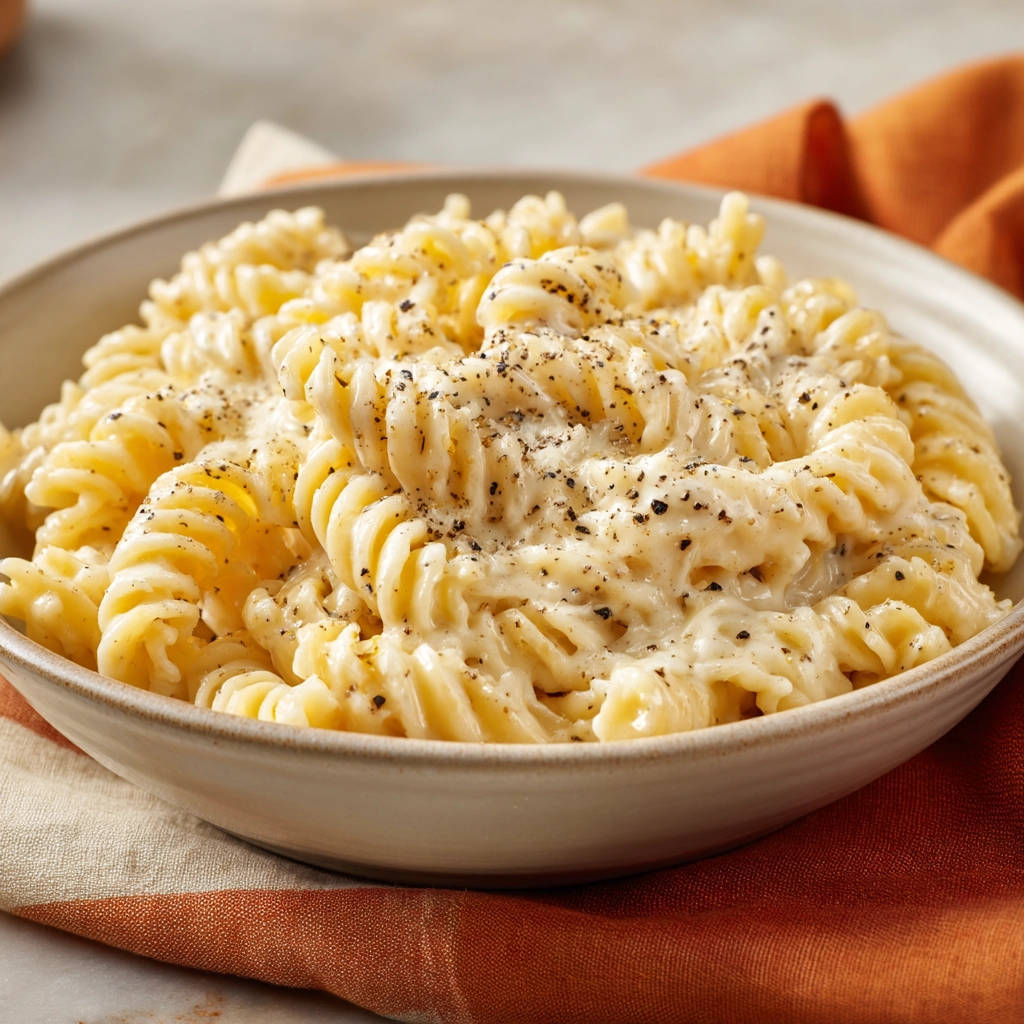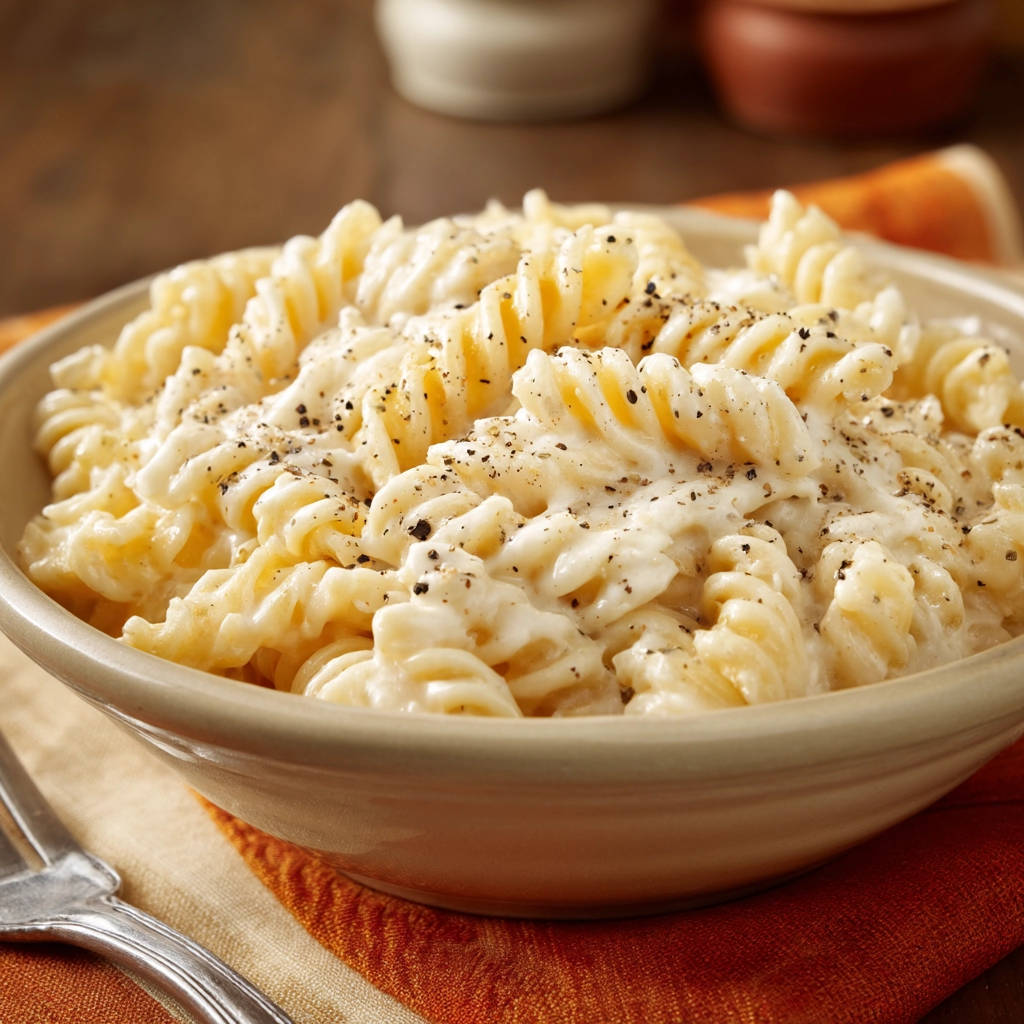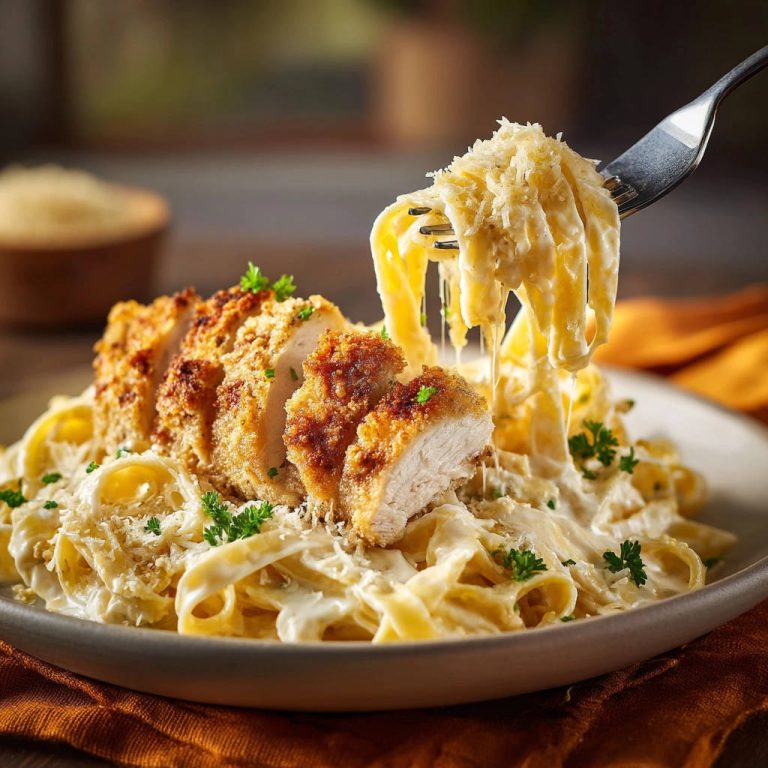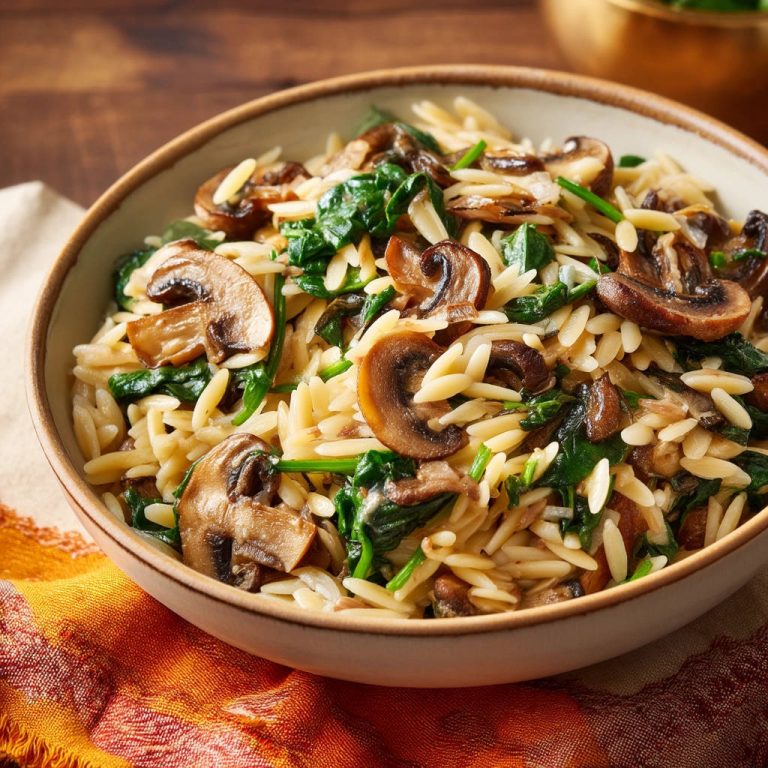Alright, let’s talk pasta. Specifically, creamy pasta. You know the dream: beautifully coated noodles, each strand coated in a rich, velvety sauce that clings like a cozy blanket on a chilly evening. But how many times have you tried to make that dream a reality at home, only to end up with a watery puddle at the bottom of the bowl, or a sauce that refuses to stick to the pasta, leaving you with sad, naked noodles? Yeah, I’ve been there. It’s one of the most frustrating kitchen fails!
For years, I chased that elusive, restaurant-quality cling. I tried different creams, varying the cheese, simmering endlessly… nothing quite hit the mark. The sauce was either too thin, too thick, or just… slippery. But then, I discovered the simple, often overlooked secret that professionals use. It’s not fancy, it’s not expensive, and it makes ALL the difference. This Creamy Spiraled Pasta recipe isn’t just about combining ingredients; it’s about mastering a technique that guarantees a sauce that actually CLINGS. Get ready to say goodbye to watery pasta woes forever!
Why You’ll Love This Creamy Spiraled Pasta
Why is this particular recipe for creamy pasta destined to become a staple in your home? Because it solves the biggest frustration of creamy sauces while being incredibly easy and fast to make.
- Effortlessly Quick: With just a 5-minute prep time and 15 minutes of cooking, dinner is on the table in about 20 minutes. Perfect for busy weeknights!
- The Cling Factor: The main star here is the sauce. It’s engineered to hug every nook and cranny of your spiraled pasta, delivering flavor in every single bite.
- Simple Ingredients: You only need a handful of basic pantry and fridge staples to create something truly special.
- Versatile Base: This creamy sauce is a perfect canvas for adding vegetables, proteins, or other flavor boosters if you want to get creative.
- Utterly Satisfying: Nothing beats a warm, comforting bowl of creamy pasta that tastes as good as it looks.
Gathering Your Ingredients for Perfect Creamy Pasta
Creating a truly memorable dish always starts with understanding the role each ingredient plays. For this creamy spiraled pasta, we’re relying on a few key players that work together to build that luxurious texture and rich flavor profile.
The foundation of our sauce is the dynamic duo of butter and heavy cream. The butter provides a rich, initial flavor and helps start the emulsification process. Heavy cream, with its high fat content, is essential for achieving that thick, decadent consistency we’re after. Using heavy cream ensures the sauce is rich and less likely to break compared to lighter creams or milk.
Cheese is where a lot of the depth comes from. Freshly grated Parmesan cheese melts beautifully into the warm cream, adding that signature salty, nutty, umami flavor. You can also use Pecorino Romano if you prefer a sharper, tangier bite – either works wonderfully in this creamy pasta sauce. Grating it yourself is key, as pre-shredded cheeses often contain anti-caking agents that can make your sauce grainy.
And then, of course, there’s the pasta itself! We recommend fusilli or rotini. Why? Because their beautiful spirals and twists are absolutely perfect for catching and holding onto that amazing creamy sauce. Every curve becomes a little pocket of deliciousness. You’ll also need standard kitchen staples like salt and freshly ground black pepper to season the sauce to perfection. Don’t be shy with the pepper!
- 1 pound fusilli or rotini pasta
- 4 tablespoons unsalted butter
- 1.5 cups heavy cream
- 1 cup freshly grated Parmesan cheese (or Pecorino Romano)
- Salt to taste
- Freshly ground black pepper to taste
Crafting Your Creamy Spiraled Pasta: Step-by-Step Mastery
Making this pasta is incredibly straightforward, but paying attention to a couple of simple techniques is what elevates it from good to absolutely perfect. Here’s how to achieve that irresistible, clinging creamy pasta sauce.
- Prep the Pasta Water: Start by getting a large pot ready for your pasta. Fill it with plenty of water – you want enough space for the pasta to move around freely. Now, this is crucial: generously salt the water. It should taste like the sea! This is the only chance you get to season the pasta itself from the inside out. Bring this salted water to a rolling boil over high heat. Once boiling, add your pound of fusilli or rotini. Cook the pasta strictly according to the package directions, but only until it reaches the al dente stage. This means it should still have a slight bite to it when you test a piece. Pasta that is overcooked becomes mushy and won’t hold the sauce as well.
- Save the Secret Weapon: This is perhaps the most important step for achieving that creamy, clinging sauce! Before you drain the pasta, use a heatproof mug or ladle to carefully scoop out about 1.5 cups of the starchy water from the pot. This cloudy, hot water is liquid gold. The starch released from the pasta into the water is what helps emulsify the fat and liquid in your sauce, creating a smooth, cohesive texture that sticks to the pasta beautifully. Set this reserved pasta water aside – you’ll need it very soon!
- Drain the Pasta Properly: Once your pasta is perfectly al dente, drain it well in a colander. Give it a good shake to get rid of excess water, but don’t rinse it! Rinsing removes the valuable surface starch that also helps the sauce adhere.
- Start the Sauce Base: If you used the pasta pot, you can likely use it again (saves on dishes!). Otherwise, grab a large skillet or another pot. Melt the 4 tablespoons of unsalted butter over medium heat. Let the butter melt completely.
- Introduce the Cream: Pour the 1.5 cups of heavy cream into the melted butter. Stir gently and bring the cream to a gentle simmer. Don’t let it boil vigorously, just a nice, soft bubbling. Let it simmer for about 2-3 minutes, stirring occasionally. This brief simmering time allows the cream to reduce slightly and start to thicken on its own.
- Incorporate the Cheese Gently: Reduce the heat to low before adding the cheese. Gradually whisk in the cup of freshly grated Parmesan or Pecorino Romano, adding just a small amount at a time. Whisk continuously as you add it. This gradual addition and constant stirring on low heat are vital. It helps the cheese melt smoothly and prevents the sauce from getting lumpy or, worse, breaking into an oily mess. Keep stirring until all the cheese is fully melted and incorporated, and the sauce looks smooth and creamy.
- Combine Pasta and Sauce: Add the drained pasta directly into the pot or skillet with the creamy cheese sauce. Use tongs or a large spoon to gently toss the pasta, ensuring every single spiral and crevice is coated evenly with the thick sauce.
- Work Your Magic with Pasta Water: Now for the true secret! Begin adding the reserved starchy pasta water to the pasta and sauce. Add it about a quarter cup at a time, while continuously tossing the pasta. You’ll notice the sauce immediately start to transform, becoming silkier and adhering more readily to the noodles. The starch in the water is doing its job, emulsifying the sauce. Keep adding pasta water, tossing frequently, until the sauce reaches your desired consistency. Some like it very thick, others a little looser. You likely won’t need all 1.5 cups of the reserved water, so add just enough until the sauce beautifully clings to the pasta without being too thick or too thin.
- Season to Perfection: Once the sauce is the perfect consistency and clings to the pasta, season it generously with salt and freshly ground black pepper. Taste and adjust as needed – the amount of salt required will depend on how salty your pasta water was and the cheese you used. Toss one last time to ensure the seasoning is distributed throughout.
- Serve Immediately: This creamy pasta is best enjoyed piping hot, right after it’s made. The sauce is at its prime consistency when warm. Garnish with a little extra black pepper or a sprinkle of fresh herbs if you like. Enjoy every perfectly coated bite!
Tips for Perfect Creamy Spiraled Pasta Every Time
Achieving creamy pasta perfection is easy once you know the few simple tricks. Here are some extra tips to ensure your dish is a showstopper:
- Cheese Quality Matters: For the smoothest, most flavorful sauce, always use a block of good quality Parmesan or Pecorino Romano and grate it yourself just before adding it to the sauce. Pre-grated cheeses often have additives that can make your sauce grainy.
- Don’t Skimp on Salt in the Pasta Water: As mentioned, this is your main chance to season the pasta itself. Salty water ensures the pasta is flavorful and contributes to the starch content in the reserved water.
- Al Dente is Your Friend: Slightly undercooked pasta finishes cooking in the sauce and absorbs some of the flavors, resulting in a more integrated dish and better texture.
- Warm Everything Up: While the recipe has you drain the pasta, sometimes briefly adding the drained pasta back to the warm empty pot before adding the sauce helps keep it warm and receptive to the sauce.
- Heat Management is Key: Keep the heat low when adding the cheese to prevent the sauce from splitting. The goal is gentle melting and emulsification, not boiling.
- Taste and Adjust: Don’t forget to taste the sauce before adding the pasta, and again after seasoning with salt and pepper at the end. Adjust salt and pepper as needed.
Variations to Try
This creamy sauce is a fantastic base for adding other ingredients. You could easily add cooked protein like perfectly grilled lemon herb chicken or succulent creamy shrimp right into the sauce with the pasta. Vegetables like sautéed mushrooms, spinach, or peas are also wonderful additions. Simply cook them before making the sauce and stir them in at the end.
What to Serve With Your Creamy Spiraled Pasta
This rich and satisfying pasta dish pairs wonderfully with a light, fresh side. A simple kale salad with a bright vinaigrette or some quickly roasted vegetables make excellent companions, providing a nice contrast in texture and flavor.
Your Creamy Pasta Questions Answered (FAQ)
Let’s tackle some common questions about making this deliciously creamy spiraled pasta.
Can I use a different type of pasta?
Absolutely! While fusilli and rotini are fantastic because their shape really grabs onto the sauce, you can use other pasta shapes. Penne, farfalle (bow ties), or even classic spaghetti or fettuccine will work. The key technique of using pasta water remains the same for achieving a clinging sauce regardless of shape.
My sauce is too thick/thin, what did I do wrong?
If your sauce is too thick, you simply need to add a little more of the reserved starchy pasta water, a tablespoon at a time, while tossing, until you reach your desired consistency. If it’s too thin, it likely needed to simmer slightly longer in step 5 before adding the cheese, or perhaps you added too much pasta water at the end. If it’s already combined with the pasta, you can try gently simmering it for another minute or two on low heat, tossing constantly, to help it thicken slightly, but be careful not to overcook the pasta.
Why did my sauce break or look oily?
This usually happens if the heat is too high when you add the cheese or if the cheese is added too quickly. Cheese needs gentle heat to melt smoothly into the cream. Ensure the heat is on low and you whisk the cheese in gradually.
Can I make this ahead of time?
Creamy pasta dishes like this are truly best served immediately. The sauce’s texture is prime right off the stove. If you need to make it ahead, prepare the sauce separately and cook the pasta just before serving. Gently reheat the sauce over low heat, adding a splash of water or cream if needed, then toss with the freshly cooked, drained pasta.
How do I store and reheat leftovers?
Store any leftovers in an airtight container in the refrigerator for up to 3-4 days. To reheat, the microwave can work, but the sauce might separate slightly. For best results, gently warm the pasta in a skillet over low heat, adding a tablespoon or two of water or cream as you stir to help bring the sauce back to its creamy consistency. Be patient and keep the heat low.
Enjoy Your Homemade Creamy Spiraled Pasta!
See? Making creamy pasta with a sauce that actually clings isn’t some culinary mystery! It’s all about that magic ingredient – starchy pasta water – and a few simple techniques. This Creamy Spiraled Pasta is proof that comforting, restaurant-quality meals are easily achievable in your own kitchen, even on a busy weeknight. The spirals coated in that rich, velvety sauce are just plain irresistible.
Give this recipe a try tonight and experience the joy of a perfectly sauced pasta dish. No more watery disappointments, just pure creamy bliss in every bite. Don’t forget to leave a comment below and let me know how yours turned out!
Creamy Spiraled Pasta
Ingredients
- 1 pound fusilli or rotini pasta
- 4 tablespoons unsalted butter
- 1.5 cups heavy cream
- 1 cup grated Parmesan cheese (or Pecorino Romano)
- Salt to taste
- Freshly ground black pepper to taste
Directions
- Bring a large pot of generously salted water to a rolling boil. Add the pasta and cook according to package directions until al dente. This means it should be cooked through but still have a slight bite. Do not overcook the pasta.
- Before draining the pasta, carefully scoop out about 1.5 cups of the starchy pasta water and set it aside. This water is the secret weapon to a clinging sauce!
- Drain the pasta well.
- In the same pot (or a large skillet), melt the butter over medium heat.
- Pour in the heavy cream and bring it to a gentle simmer. Let it simmer for 2-3 minutes, stirring occasionally, to allow it to thicken slightly.
- Gradually whisk in the grated cheese, a little at a time, stirring constantly until it melts and is fully incorporated into the cream. Keep the heat low to prevent the sauce from breaking.
- Add the drained pasta directly into the sauce. Toss gently to coat the pasta completely.
- Here’s where the magic happens: Begin adding the reserved pasta water, about a quarter cup at a time, while continuously tossing the pasta. The starch in the water will help emulsify the sauce, creating a smooth, creamy consistency that clings beautifully to the pasta. Add just enough water to reach your desired sauce thickness. You may not need all of the reserved water.
- Season generously with salt and freshly ground black pepper. Toss again to distribute the seasoning.
- Serve immediately, garnished with more black pepper if desired. Enjoy the sauce that actually stays put!








